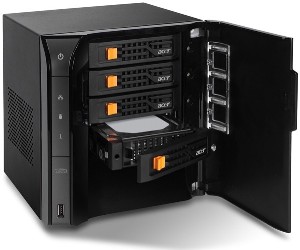
Congratulations!! Your hard work in starting a small business has begun to pay off. You started it as a hobby by running it from your laptop on the kitchen table or a garage. The customers like what you are selling and the word is beginning to spread. The sales are growing at a healthy clip and soon you are going to hire your first batch of employees.
As soon as you have more than one employee with their own laptops you will realize the need for sharing data and computer programs. You need reliable way to store and access the data as well as common computer programs between all the employees. This is where the computer server comes in the picture. But, just what is a server?
What is a Server?
A server functions for multiple people within the company much like a desktop or laptop computer functions for an individual user. Just as your personal computer contains various software programs to handle different functions, a server is configured to handle number of functions of an individual company or several branches of a company. For instance, your personal computer may have an email client to read your personal emails, a word processing program and internet browsers. By contrast, a server can be configured to run functions shared by many users, such as company-wide email system, shared print queue and databases.
In-House Servers versus Cloud-Based Data Hosting
When it comes to buying and maintaining computer servers you have two broad choices. You can either buy and maintain them yourself or you can host the server with a specialized hosting provider who will support it from their premises. The later is what is sometimes referred to as cloud based server hosting. There are pros and cons of both approaches. The dedicated on-premise server hosting requires you to have a trained computer expert. On the other hand, cloud based hosting can carry the risk of security breaches or loss of data should the hosting provider go out of business.
No matter what approach you take you should understand different types of server choices available to you. Each type serves specific purpose and is tailored for certain situation. The list below describes those choices along with advice on when you should use them.
Windows Home Server 2011
While Windows Home Server 2011 is a consumer-oriented product, it is actually based on the strong business-oriented server operating system – Windows Server 2008 R2. Windows Home Server 2011 could be a viable choice for businesses that need to support ten or fewer PC clients. Because it is designed as a consumer product, Windows Home Server 2011 is more user friendly and affordable than many other servers. Specifically, you do not need a separate monitor, keyboard and mouse to operate the server.
Network-Attached Storage
For a step up from Windows Home Server 2011 that remains affordable and user friendly, consider Network-Attached Storage, abbreviated as NAS, which often uses Linux as its operating system. The smallest NAS configurations require only plugging a USB hard drive into a router. A more robust NAS configuration includes a NAS box that acts as an interface between clients and storage. The NAS box does not require a mouse, keyboard or monitor; instead, it is controlled over the network by a remote client.
Tower Servers
Tower servers and smaller micro towers look much like desktop PCs. Like desktop PCs, tower servers and micro towers require dedicated monitors, keyboards and mice to operate. However, for mid-sized businesses that need more server capacity than NAS boxes, tower servers represent a viable alternative. They are less expensive than rack or blade servers, and run quietly without the need for special cooling fans.
Rack Servers
If your business needs to run multiple servers, rack servers are best options. Rack servers are configured to fit within standard sized space that is 19 inches wide and 42U high, where a single U measures 1.75 inches. A cable management system eliminates a tangled mess of wires. Rack servers are easily expandable, however, they are often very loud, and require climate-controlled conditions. Rack servers are also more difficult to maintain than tower servers.
Blade Servers
Where rack servers demand dedicated space, several blade servers can be placed within a single chassis. Adding servers only requires adding new blades to the chassis. You can also incorporate Ethernet switches, firewalls and other components along with the servers. The chassis includes the power supply, cooling and connectivity, so new cables are not needed. Blade servers have a higher upfront cost than other server configurations, but also have more computer power.
Charles Talley has managed his small business for several years now. He likes to help others just starting out by posting about his insights online. He recommends you to check out this data hosting company.







This is packed with great information. I just read about CDN’s From what I understand they take your site information and share withing their large network of servers. This cuts page load time to a minimum. The article I read suggested it may be an application for larger sites?
That is true. CDN stands for Content
Delivery Network. Essentially it involves distributing your content to
large number of servers at different geographic locations so that the
web page is served from the server closest to your location, thus
reducing page load time. You are right that it is typically useful for
large sites.